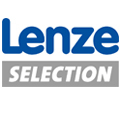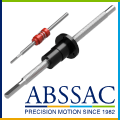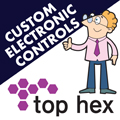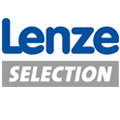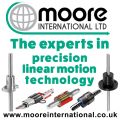
Posted to News on 16th Jul 2010, 07:15
Wave energy converters benefit from real-time control
National Instruments has supplied Compact FieldPoint, Real-Time Module, CompactRIO hardware, FPGA Module and, of course, LabVIEW to Wavebob for use in scale models and prototype wave energy converters.
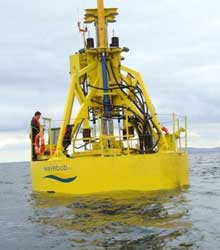
Since 1999, Wavebob Ltd has been developing a prototype wave energy converter (WEC) for deployment in offshore 'wave farms' similar to wind farms. The company's goal is a commercial WEC that can produce significant electrical power for the onshore grid on coastlines with a suitable wave climate.
Invented by Irish physicist William Dick, the Wavebob WEC is described as a unique dual-body point absorber in which the two bodies move relative to ocean waves and to each other. The two bodies are coupled by hydraulic cylinder pumps, which are used to extract power from the relative motion. This part of the WEC is known as the power takeoff (PTO).
WEC development involves trials of small-scale prototypes in wave-generating tanks (at scales of one-hundredth to one-tenth) and then larger scale (one-fifth to one-half) with fully operating PTO systems. The development team administers trials with the small-scale WECs in a sink, bath or pond. When all trials are complete and successful, the team builds a full-size WEC prototype.
Rugged control system required
To control the PTO in extreme sea conditions while maintaining efficient power extraction, the WEC requires a rugged and sophisticated control system. In addition, each stage of product development has its own requirements for the data acquisition and supervisory control system.
The WEC prototype trials aim to demonstrate successfully the Wavebob WEC technology and gather data that would inform the design of a full-scale Wavebob WEC.
A control and data acquisition system for the trials required real-time control of hydraulic valve switching according to sensor inputs, as well as data acquisition from a variety of sensors at appropriate sample rates. The requirements are similar to those of many industrial controller applications, but also include the challenges inherent to operating in varying sea conditions. These include operating in a marine environment, consequent dynamic effects on equipment, operation from a DC source (24V DC batteries with charging systems), the need for deterministic control (and, therefore, a real-time operating system), and relatively high-channel-count data acquisition and digital I/O.
In addition, the WEC prototypes have a variety of sensors, and the digital I/O includes solenoid switching with significant power requirements. Rapid code development, easy-to-modify control software, code versatility and standard interfacing are all essential.
Why LabVIEW?
After extensive research into the options on the market, LabVIEW graphical design software was a natural fit for the PTO control system. In particular, the versatility, speed, and simplicity of coding in LabVIEW, as well as excellent diagnostic and debugging tools, made it an obvious choice. In addition, the range of hardware available from NI and its seamless integration with LabVIEW offered real benefits to the project.
The team selected LabVIEW coupled with Compact FieldPoint and CompactRIO for the control and data acquisition system to achieve the following benefits:
- Hardware/software integration
- Rapid development using LabVIEW
- Real-time hardware and OS
- Compact, rugged and adaptable hardware
- Upgrade path and distributed system capability
- Excellent technical backup, particularly via ni.com
During the first two trial phases for the Wavebob WEC, the team used Compact FieldPoint with LabVIEW and LabVIEW Real-Time. While the system performed extremely well, both the complexity of the control requirements and channel count increased in the subsequent development phase (MK3). As a result, the limits of the test system were approached on the second prototype. The MK3 prototype would require more processor power and faster acquisition rates.
Rapid development

Wavebob's engineers selected CompactRIO for its integration with LabVIEW as well as its processing power and acquisition rates. The hardware offers the ability to run control and data acquisition loops at much faster sample rates without compromising the timing integrity of the system due to processor overload. All control and I/O functions can be programmed on the field-programmable gate array (FPGA) in the CompactRIO backplane and can run simultaneously. The controller only has to read the resulting data when logging. The small footprint and low power consumption of the CompactRIO system also facilitated incorporation into the one-seventeenth scale model.
Just as in the previous prototypes, LabVIEW was the optimum choice due to its tight integration with the selected hardware. The graphical programming language is easy to use, versatile, has a myriad of modules and tools available (including the ability to target a real-time embedded OS), and very good support.
Follow the links for more information about Compact FieldPoint, LabVIEW Real-Time, CompactRIO, LabVIEW FPGA Module and LabVIEW.
National Instruments Corporation (UK) Ltd
Measurement House, Newbury Business Park
London Road
RG14 2PZ
UNITED KINGDOM
+44 (0)1635 523545




